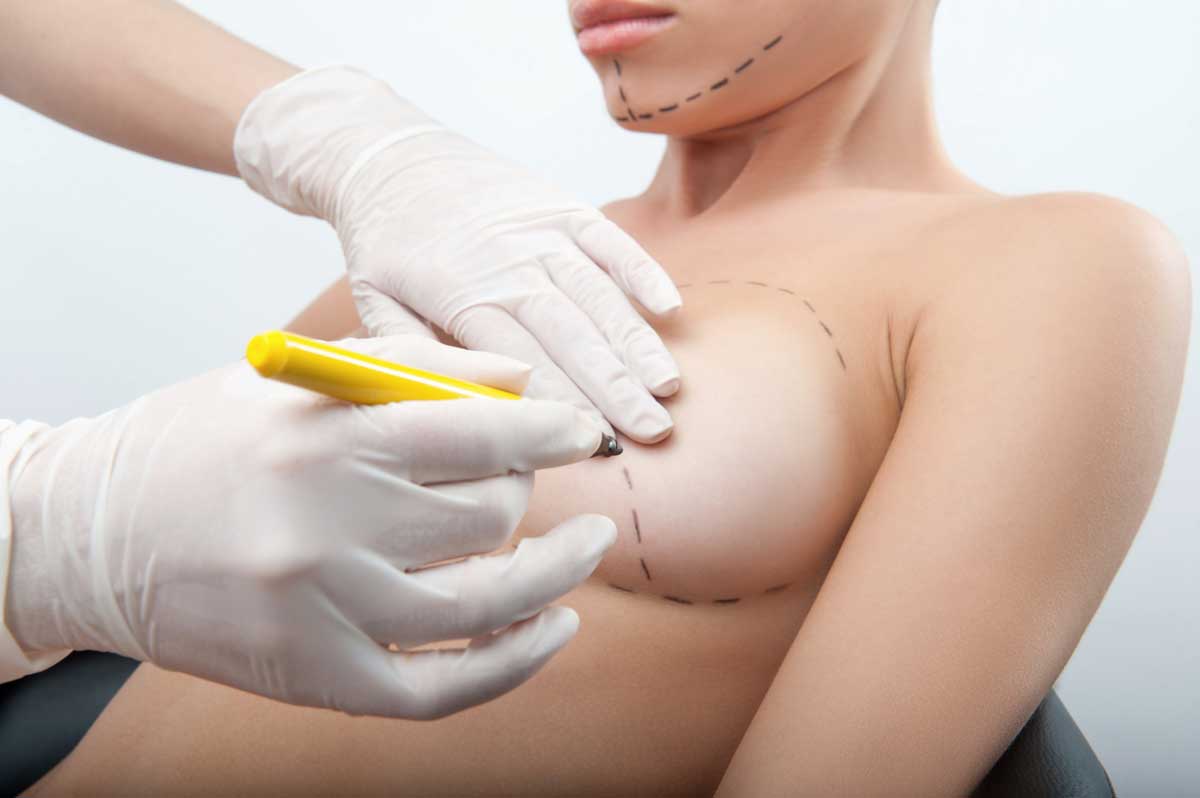
In November last year, an investigation by BBC Panorama, on the lack of sufficient regulation in the use of medical devices, drew attention to the safety concerns around using ‘textured’ silicone breast implants.The programme revealed the link between the most commonly used textured implants in the UK and the likelihood of patients developing a rare form of breast cancer. Despite French authorities advising surgeons to stop using textured implants for breast augmentation, followed by a total ban of the implants in France earlier this month, they are still available for women in the UK.
This investigation, and the publicity around it, has likely seen women consider more carefully the risks of implant-based breast augmentation and investigate alternatives such as fat transfer to avoid the risk of cancer from textured implants.
Fat transfer, the process of removing fat from a patient’s own body (usually from the abdomen and thighs) and injecting back into another area to boost volume, is a breast augmentation method growing in popularity. The British Association of Aesthetic Plastic Surgeons (BAAPS) said that last year 1,400 women in the UK had a fat transfer procedure for breast augmentation, and the International Society of Aesthetic Plastic Surgery has seen a 22 per cent rise in demand between 2016 and 2017.
But, as with any surgical procedure, there are risks with fat transfer too, and some commentators have suggested that it could hold the same fat embolism risk posed by the notorious “Brazillian butt lift.” Fat transfer for the breast involves the same process as is used in the Brazilian butt lift, branded as the most dangerous cosmetic treatment to undergo (BAAPS) and which has claimed the lives of two young women, whose deaths were the result of a fat clot. With this in mind, is fat transfer even riskier than textured implants? From a surgeons’ point of view, which procedure is the safest and how can women make the right choice?
Consultant Plastic Surgeon Victoria Rose (MBBS FRCSplas LLM) of DRG Plastic Surgery in Harley Street is one of the UK’s leading plastic surgeons with a specialism in breast surgery, including complex reconstruction following cancer. Victoria has significant experience of both traditional breast implant procedures and breast augmentation through fat transfer. She says it is positive that women, and indeed anyone considering a surgical procedure, should be interested in understanding the risks involved, but that media scrutiny of the most dramatic risk factors is not always helpful, or accurate, and fails to inform patients of the more common complications which could actually affect them;
“It is not true to suggest that a fat embolism is a likely risk of breast fat grafting, in the same way that it is in a Brazilian butt lift. There are major anatomical differences in the two procedures and the volume of fat transferred is vastly different. There can be serious risks involved in textured implant augmentation and fat transfer but, statistically, these are extremely rare. For example, the risk of ALCL (a rare form of breast cancer) as a result of textured implants is 1 in 30,000. Similarly, fat transfer as an alternative way to boost size and volume is safe if carried out correctly and the risk of a fat embolism is negligible, as is the more serious risk of infection. Neither procedure is ‘deadly’ when under the watchful eyes of a skilled practitioner – some things to look for in a surgeon includes checking they are registered with the General Medical Council and on their specialist register of plastic surgeons and that they come with good personal recommendations. You can also get advice on who best to trust by speaking to your GP.
“There are however, key differences and more common risk factors with both procedures which women would be wise to consider when choosing between them. Implants carry the risk of needing a re-operation whereas fat grafting can cause irregularities in the donor site, in the form of asymmetry and indentations. There is no risk of ‘rippling’ or displacement with fat transfer but volume is limited by the amount of fat stores a patient has. This means implants tend to be able to increase breast size in larger volumes immediately, as opposed to fat grafting which often requires two sessions.
“While the media may play a crucial role in lobbying for scrutiny of dangerous practices and lack of regulation within the industry, when it comes to weighing up the right procedure for you and the true risks involved, the role of individual surgeons is critical. Make sure you feel comfortable speaking to your surgeon about any and every detail – including expected outcomes and complications which are most likely.”
By Victoria Rose
About the author
Victoria Rose (MBBS FRCSplas LLM) is one of the UK’s leading plastic surgeons with a specialism in breast reconstruction following cancer (including complex cases and microsurgical cases). Victoria works as Consultant Plastic Surgeon at DRG Plastic Surgery in Harley Street London: https://www.drg-plasticsurgery.co.uk with Consultant Plastic Surgeon David Gateley and within two of London’s NHS hospital trusts.